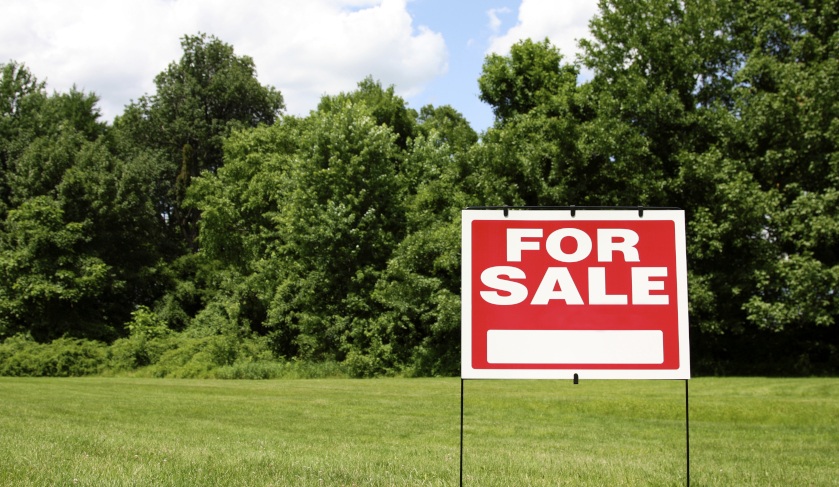Why these suburbs are faring better than others as prices fall
New data points to which suburbs with the largest average land sizes in each capital city are bucking against general property market trends.

Detailing in CoreLogic’s latest Property Pulse report, Cameron Kusher, research analyst at CoreLogic, revealed that suburbs that contain larger average sizes are defying capital city property markets for the most part, experiencing stronger growth compared to capital city alternatives.
When looking at average land area based on sales over the last year to February 2019, Mr Kusher found that, for houses, annual changes in these suburbs are usually better than the capital city average, and that the value of larger land sizes is held in high regard by buyers.
“As new development increasingly moves towards higher densities and smaller lot sizes for houses, large housing lots are likely to continue to be highly desirable,” Mr Kusher said.
“The desirability won’t be only for more space, but also where the potential for future subdivision may exist.”
The Property Pulse analysed the capital cities across the country and found how the largest land available is performing compared to house values over the last 12 months:
NSW
Sydney house values have declined by 11.5 per cent over the last 12 months to February 2019.
The large land size suburbs of Ellis Lane, Grasmere and Douglas Park all saw declines that were milder than the capital city change, with declines of 2.2 per cent, 2.9 per cent and 4.3 per cent, respectively.
Londonderry, also in the list, was the only one of the top five suburbs to record a rise, at 2.1 per cent.
Victoria
Melbourne house values are also down by 11.5 per cent, but this time, the top suburb for largest average land size is performing slightly better, being Park Orchards as it declined by 9.4 per cent over the year to $1,286,882.
Following this was North Warrandyte with a decline of 4.5 per cent, Beaconsfield with a decline of 1.8 per cent, The Patch with a decline of 1.9 per cent and Narre Warren North with a decline of 2.2 per cent.
Queensland
Brisbane house values saw a decline of 0.4 of a percentage point over the last year, and the state’s largest average land size suburb of Pullenvale is performing under this, declining by 8.3 per cent down to $1,049,160.
Anstead, the suburb for second largest average land size, saw values decline further percentage-wise, dropping by 9.1 per cent, and then Laidley Heights came in fifth for size, also declining by 0.9 of a percentage point.
Samford Valley and Regency Downs, third and fourth in average land size, recorded growth of 2.8 per cent and 1 per cent, respectively.
South Australia
Stronger growth was noted in comparison to the big three states for investment, with Adelaide recording an annual increase in house values of 0.9 of a percentage point. The capital city’s largest suburb for land size, Lewiston, recorded a value rise of 11.1 per cent to $442,342.
Other value rises were seen in Crafers West by 8.9 per cent, Roseworthy by 5.1 per cent and Aldgate by 8.3 per cent, respectively ranking third, fourth and fifth for average land size.
Two Wells, which ranked second for average land size, was the only suburb of the top five to record a value decline of 2.9 per cent.
Western Australia
Perth house values recorded a decline of 6.7 per cent, and the capital city’s largest average land size suburb, Bedfordale, declined by 4.3 per cent in comparison down to $691,241.
Glen Forrest, Parkerville and Roleystone also recorded declines of 0.7 of a percentage point, 8.3 per cent and 1.3 per cent, respectively, and were second, fourth and fifth for average land size, respectively.
The only suburb to record a rise in the top five for average land size was Serpentine, which rose by 0.1 of a percentage point for the year to $588,581.
Tasmania
Hobart was the only capital city to see all five of its top suburbs for average land size to record value rises. House values across the capital city were up by 6.8 per cent, while its top-performing suburb for average land size was Richmond, which rose by 15.1 per cent to $551,207.
In second place was Miena, which was up 3.1 per cent; then Snug, which was up by 5.9 per cent; Margate, which was up by 9.7 per cent; and then Lewisham, which was up by 10.1 per cent, rounded out the top five.
NT
Darwin house values saw a slight rise of 0.2 of a percentage point over the last year, and the suburb with the largest average land size was Howard Springs, which recorded a rise of 2.5 per cent.
Other suburbs in the top five for average land size included Bellamack in third place, up by 2.4 per cent, and Millner in fourth, up by 1.2 per cent.
Fannie Bay, which was in second place, declined by 8 per cent, which was joined by Rapid Creek, in fifth place, and saw a similar decline of 8.2 per cent.
ACT
Canberra recorded a house value rise of 4.1 per cent, but the top suburb for average land size, Belconnen, did not meet this growth and rose by 2.5 per cent.
Forrest was one of the two suburbs in the top five to surpass the capital city-wide rise, which rose by 5.1 per cent and was ranked second, and Phillip was the other, which ranked fourth and saw a rise of 16.2 per cent.
Turner and Hawker, ranked third and fifth, respectively, for average land size, saw value declines of 13.5 per cent and 1.7 per cent, respectively.
